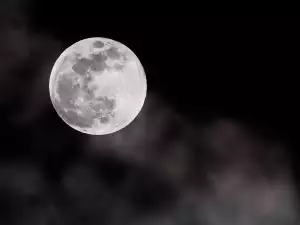NASA has revealed the dark side of the moon to the public through video footage. For centuries, Earth's satellite has sparked guesswork and theories as to what lies on its unseen surface. NASA has unraveled the mystery with its nearly 2-minute footage.
For their video, the experts from the Administration used photographs from the Lunar Reconnaissance Orbiter and computer graphics. The video was seen by nearly 400 thousand people in just several hours.
NASA's research has shown that both sides of the moon go through a complete cycle of phases. The surface of the dark side, however, is quite different. There are no lunar seas there, like the ones we see on the light side with the naked eye from Earth.
The lunar seas are actually basalt plains, says NASA. These are absent on the dark side but a characteristic trait is that the surface there is more densely dotted with meteorite craters.
The moon has a synchronous rotation, allowing one side to always be visible from Earth. The far side, with the exception of the horizon, is not visible from our planet. This border between the illuminated and dark side of the moon is called the "solar terminator".

The unseen side of the moon was completely unfamiliar to humanity before the space age. The synchronous rotation of the moon is the result of the tidal forces on Earth, which significantly reduced the moon's angular momentum shortly after its formation.
Experts explain that the given term "dark side of the moon" is inaccurate. That part of the moon gets the exact same amount of sunlight as the light part.
Further explanation pertaining to the unseen side of the moon is the location of the Earth, its satellite and the sun. Spacecraft are out of reach of radio broadcasting signals when they are landed on the far side of the moon or above it.
In fact, the far side of the moon is the region in the solar system that is best shielded from Earth's radio waves. There are plans being made to build a radio telescope on the lunar surface in 2050.












